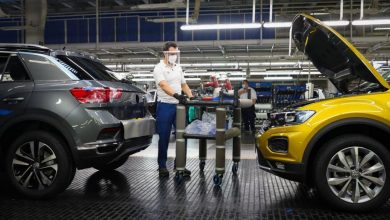Top stories of the decade: The automotive industry in transition
A new decade meant forgetting the last one — the 2000s were the “lost decade” in Michigan thanks to declining economic output, massive job losses and stagnation across nearly every sector. A year earlier, two of the country’s largest automakers, General Motors and Chrysler, were under government-sponsored bankruptcy thanks to the late-decade economic fallout of the Great Recession. U.S. car sales hit unprecedented lows at 10.3 million units. Pain was plentiful.
But the 2010s started, shockingly, on a high note. The economic trends were reversing and car sales began to pick up throughout the year and GM’s and Chrysler’s new balance sheets, free of loads of debt, made them more agile. U.S. car sales hit record highs by 2016 at 17.5 million units.
Employment began to rebound as well, though never fully recovering. More than 235,000 automotive supplier and automaker jobs remain lost since 2000. This is the result of a sleeker, less robust automotive industry, one faced with potentially greater challenges than the financial troubles of the past 20 years.
The last decade created new entrants into the market from the technology sector with now stronger balance sheets and more social capital than anything the industry had ever seen. Companies like Google, Microsoft and Apple, among many others, are now in the automotive sector. All vying for a piece of the growing technology pie on wheels. Self-driving vehicles and electrification remain the greatest opportunity and threat to the region’s automotive sector.
The legacy supply base spent much of the last decade adjusting to this new future. Most acquired new technology firms or were acquired, making use of scales of economy to carve out market share in spaces like electric harnesses, electric motors and a host of other now critical parts for autonomous and electric vehicles.
But there is an important question we don’t yet know the answer to: How many jobs will be lost at Auburn Hills powertrain supplier BorgWarner Inc., Detroit-based American Axle & Manufacturing Inc. or dozens of other suppliers in the region if GM and Ford are all-in on electrification?
Battery-powered cars have just more than a dozen moving parts, compared with hundreds in one powered by a traditional internal combustion engine. So while those suppliers have spent years investing in electric-vehicle technology, components for gas-powered cars continue to make up the bulk of their businesses.
The arithmetic doesn’t reveal whether the region’s local industry will win out in the 2020s, but it doesn’t look bright for the state’s workforce. However, it’s a new decade, with a future yet to be determined, that will answer the questions from the last one.
Font: Crains





